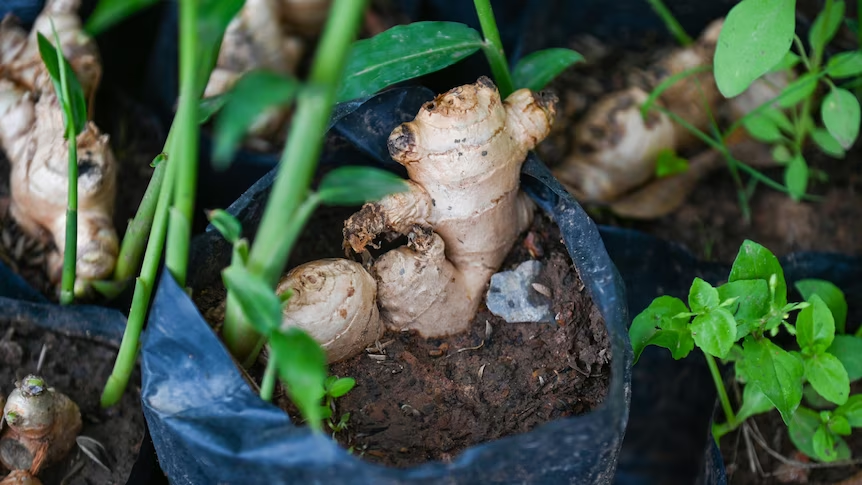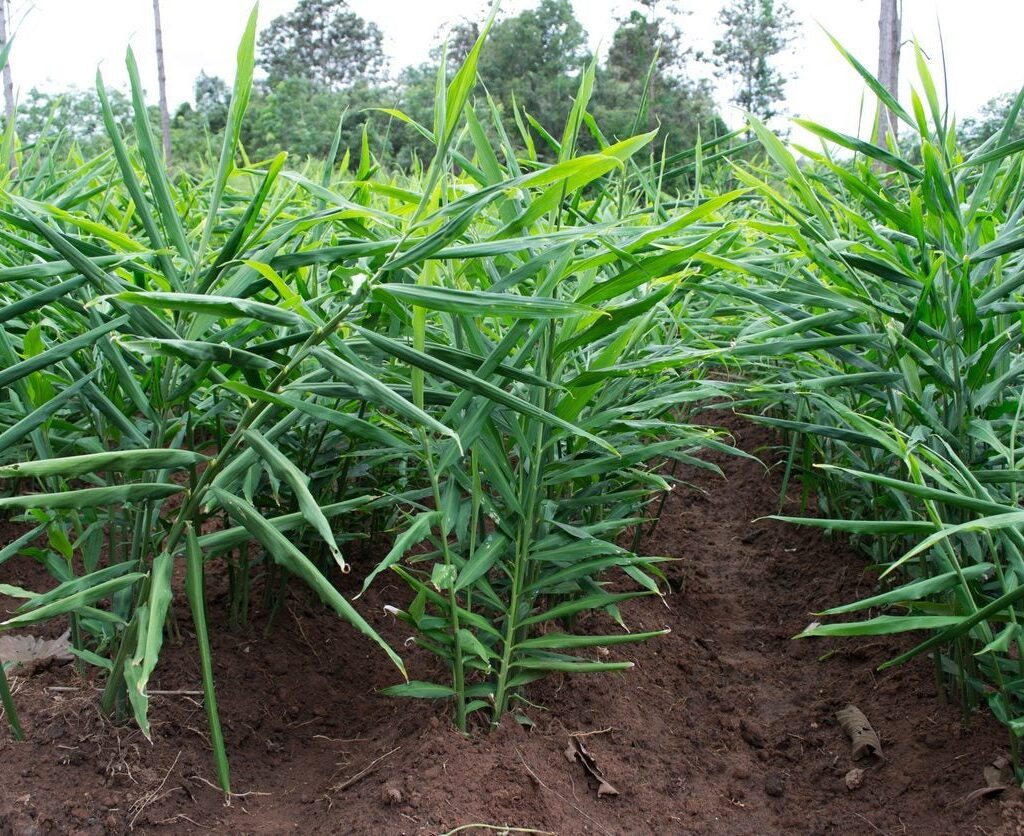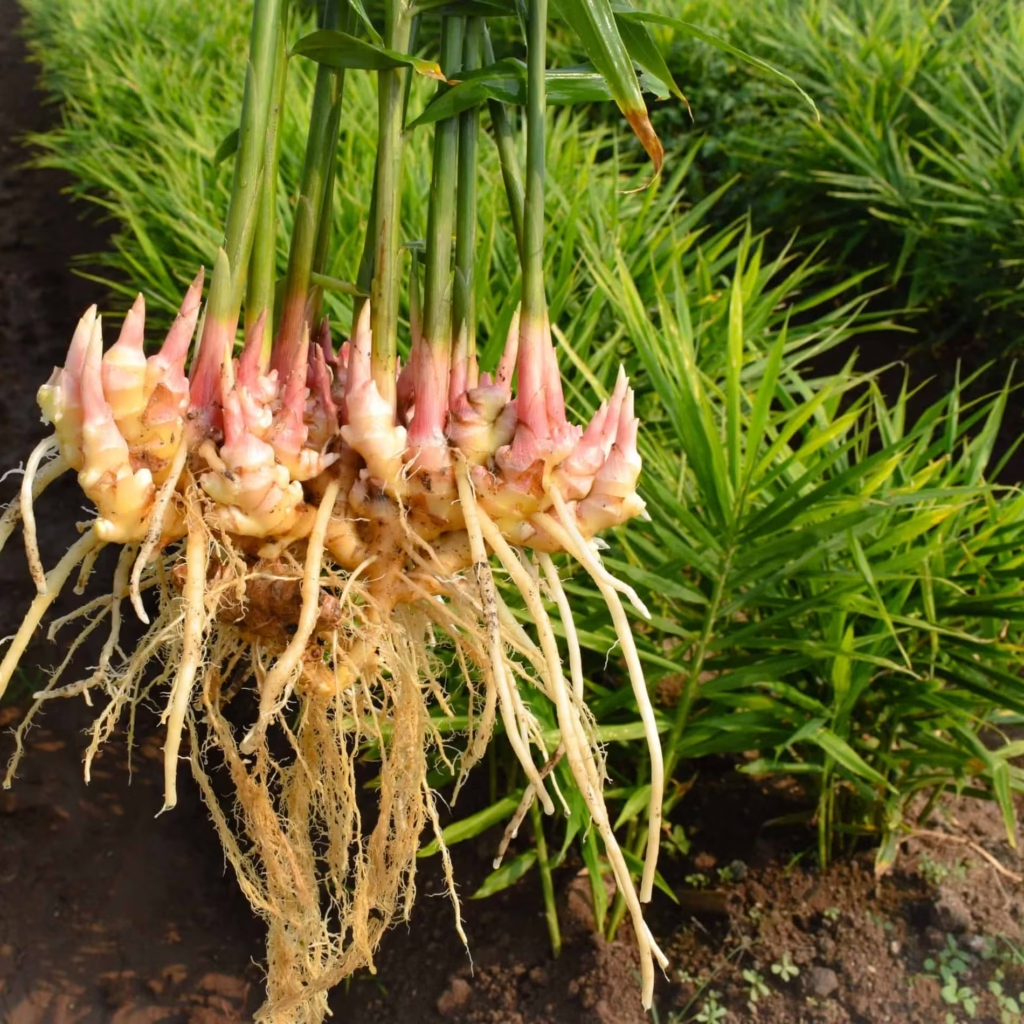Imagine stepping into your kitchen and slicing into a plump, juicy piece of ginger that you’ve grown yourself—aromatic, flavorful, and completely organic. Whether you’re a cooking enthusiast, a tea lover, or a health-conscious gardener, growing your own ginger root is a rewarding and surprisingly easy experience. Even better? You don’t need a large garden—just a sunny spot, a little patience, and the right know-how.
In this detailed guide, you’ll learn how to plant ginger root and enjoy fresh flavors straight from your backyard, balcony, or even your windowsill.

Why Grow Ginger at Home?
Ginger (Zingiber officinale) is a tropical plant prized for its knobby rhizomes, or underground stems, packed with zesty heat and powerful health benefits. Here’s why it’s worth growing your own:
- Organic and chemical-free: Store-bought ginger is often treated with growth inhibitors.
- Fresh taste: Nothing beats the bold, aromatic flavor of just-harvested ginger.
- Easy to grow: Ginger is low-maintenance and can be grown in containers.
- Health benefits: Known for its anti-inflammatory and digestive properties.
How to Choose Ginger Root for Planting
Skip the seeds—ginger is grown from rhizomes, the part you typically see in grocery stores. However, not all ginger roots are created equal.
What to Look For:
- Fresh, plump roots with tight skin.
- “Eyes” or buds (small bumps or nubs where new shoots will sprout).
- Organic is best—non-organic roots may be treated with chemicals to prevent sprouting.
Where to Buy:
- Organic grocery stores
- Local garden centers
- Online specialty garden retailers
Pro Tip: Soak store-bought ginger in warm water overnight to remove any chemical residue before planting.
Ideal Growing Conditions for Ginger
Ginger thrives in warm, humid, and shaded conditions, mimicking its tropical origins.
- Temperature: 70°F–90°F (21°C–32°C)
- Sunlight: Partial shade or filtered sun—avoid harsh afternoon rays.
- Humidity: High humidity is ideal. Mist frequently or use a humidity tray indoors.
If you’re in a cooler climate, you can start ginger indoors in spring and move it outside when temperatures stay consistently warm.

Best Containers and Soil for Growing Ginger
Container Requirements:
- Minimum 12 inches deep
- Wide rather than tall (ginger spreads horizontally)
- Drainage holes are essential
Soil Mix:
- Loose, well-draining, and rich in organic matter
- Ideal mix: 1 part compost, 1 part potting soil, and 1 part sand or perlite
Avoid heavy, clay soils that can waterlog and rot the rhizomes.
How to Plant Ginger Root (Step-by-Step)
1. Prepare the Rhizome
- Cut into pieces: Each piece should be 1–2 inches long with at least one “eye.”
- Let the cut ends dry for 24–48 hours to form a callus—this helps prevent rot.
2. Fill the Container
- Add a few inches of soil to the bottom of the container.
- Place rhizome pieces flat, eyes facing upward.
3. Cover with Soil
- Cover with 1–2 inches of soil.
- Water lightly but thoroughly.
4. Place in Warm, Humid Spot
- Indoors near a sunny window or outdoors in a sheltered, partially shaded location.
Watering and Care
- Keep soil moist but not soggy—ginger likes humidity, not wet feet.
- Water when the top inch of soil feels dry.
- Increase misting during dry spells or when growing indoors.
- Fertilize monthly with a balanced liquid fertilizer or compost tea.
Pro Tip: Add mulch (like straw or leaf litter) to retain moisture and keep rhizomes cool.
Growth Timeline
- 2–3 weeks: Sprouts appear.
- 3 months: Rhizomes begin to expand underground.
- 8–10 months: Full harvest is ready.
You can start harvesting baby ginger as early as 4–5 months, but mature ginger develops more complex flavor and medicinal potency.

Harvesting Fresh Ginger
You don’t have to dig up the entire plant to enjoy your ginger.
For Young Ginger:
- Wait 4–6 months.
- Carefully dig around the base and remove a small section of rhizome.
- Cover remaining root with soil and continue growing.
For Mature Ginger:
- After 8–10 months, when leaves yellow and die back, it’s harvest time.
- Gently lift the entire plant from the container.
- Rinse off the soil and pat dry.
Let it cure in a dry, shaded area for a few days to toughen the skin if you plan to store it.
Storing and Using Fresh Ginger
Storage Tips:
- Store whole, unpeeled ginger in the refrigerator for 3–4 weeks.
- Freeze peeled slices for long-term use.
- Dry or dehydrate for homemade ginger powder or tea.
Delicious Uses:
- Grated in stir-fries and curries
- Sliced in herbal teas
- Minced into marinades and sauces
- Added to baked goods like gingerbread or cookies

Bonus: Grow Ginger Indoors Year-Round
Yes, you can grow ginger indoors all year long!
Indoor Tips:
- Use a grow light if natural light is limited.
- Increase humidity with misting, pebble trays, or a small humidifier.
- Keep away from cold drafts or heaters.
With proper indoor care, your ginger plant will thrive in a pot on your windowsill or kitchen counter.
Common Problems and Solutions
Yellow Leaves
- Cause: Overwatering, poor drainage, or nutrient deficiency.
- Solution: Check for soggy soil, repot if needed, feed with fertilizer.
No Sprouts
- Cause: Dormant or treated rhizomes.
- Solution: Use organic rhizomes, soak overnight before planting.
Mold or Rot
- Cause: Excess moisture.
- Solution: Improve drainage, let soil dry slightly between waterings.
Companion Planting with Ginger
Ginger grows well with other shade-loving, moisture-loving plants such as:
- Turmeric
- Lemongrass
- Cilantro
- Mint (in separate pots to prevent spreading)
This makes ginger a great addition to your herbal container garden.
Final Thoughts
Growing ginger at home is one of the most satisfying gardening projects you can try. It’s low-maintenance, space-friendly, and pays off with rich flavors and powerful health benefits. Whether you’re in a sunny climate or a cozy kitchen, a few simple steps can lead to a bountiful supply of fresh ginger root.
So grab a plump rhizome, plant it today, and start enjoying the spicy aroma and flavor of homegrown ginger in your meals, teas, and remedies.
FAQs: How to Plant Ginger Root
Q: How long does it take ginger to grow?
A: About 8–10 months for mature rhizomes. Young ginger can be harvested in 4–6 months.
Q: Can I grow ginger in cold climates?
A: Yes! Start it indoors and move outside during warm months or grow it indoors year-round with enough warmth and light.
Q: Do I need flowers to get ginger?
A: No! Ginger is harvested from the underground rhizomes, not the flowers.





Leave A Comment